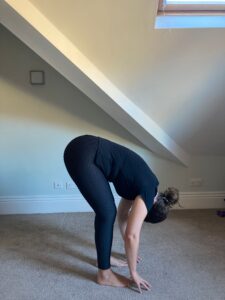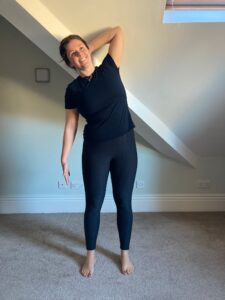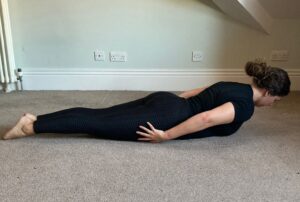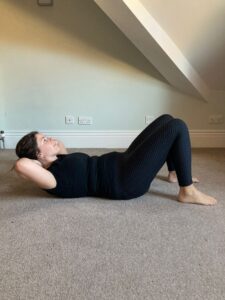Exercise
5 Pilates exercises to ease stiffness in your back
Daily life can cause stiffness and pain in our back – whether you’ve overdone it at the gym, or spent too long hunched over your computer. The good news is that there are a number of Pilates exercises you can do to help.
Here, Robin Kendall, a Pilates instructor at East of Eden, shares some of her go-to exercises for easing back stiffness.
5 exercises to ease stiffness in your back
As Robin explains, a common cause of stiffness in our spines is because we’re not mobilising our bodies correctly on a daily basis.
“Our bodies are meant to move in all planes of motion: forward-and-back (sagittal), side-to-side (coronal) and into and out of rotation (transverse),” she says. “In day-to-day life we tend to move only in the sagittal plane, neglecting the other two ranges of motion which can result in our spines becoming inflexible and stiff.”
Try these moves to help mobilise your spine and ease stiffness away.
The roll down
 Objective: To stretch the back extensors and increase the range of motion of the spine.
Objective: To stretch the back extensors and increase the range of motion of the spine.
To begin, stand in an upright position. Imagine a brick wall behind the back of your head, ribcage, pelvis and heels. Have your legs parallel and hip-width apart. Keep your arms in line with your body, palms facing inwards.
- Inhale, pause.
- Exhale, allowing your chin to lower to your chest. Leading with the head, start to peel your spine away from the wall articulating down towards the floor one vertebra at a time. Your head and arms are heavy – they hang from your neck and shoulders.
- Inhale, pause.
- Exhale as you reverse the move rebuilding your spine back up against the wall to the start position.
- Repeat three times.
Important note: Knees are soft or bent
The side bend
 Objective: To lengthen and mobilise the spine in side flexion.
Objective: To lengthen and mobilise the spine in side flexion.
Stand in an upright position as you did in the roll down. Imagine that you’re sandwiched between two brick walls. Place one hand behind your head, elbow bent out to the side and the other arm alongside the body, palm facing inward
- Inhale, pause.
- Exhale as you gradually arch your spine to one side. Think of reaching up and over a massive beach ball so you lengthen your spine upwards and over rather than compressing or shortening any area of the torso.
- Inhale, pause.
- Exhale to reverse the move returning to the start position.
- Do three to four repetitions each side.
Spine twist supine
 Objective: To lengthen and mobilise the spine in rotation.
Objective: To lengthen and mobilise the spine in rotation.
Lying on your back with your arms extend out from the shoulders in a T position. Legs together in tabletop – hips and knees at 90 degrees.
- Inhale to move legs and pelvis as one unit to one side.
- Exhale to return to the start position.
- Do three to five repetitions each side.
Important note: Initiate the move from the abdominals and obliques. While your lower body rotates, your shoulders are relaxed and the shoulder blades remain on the mat
Back extension
 Objective: To lengthen and mobilise the spine in extension
Objective: To lengthen and mobilise the spine in extension
Lie face down with the head aligned with the spine, arms straight alongside the body palms pressing against the legs and legs together.
- Inhale to lift the upper trunk away from the floor
- Exhale to lower upper trunk without touching the nose to the floor.
- Do five to 10 repetitions
Important note: Keep your head aligned with your spine, abdominals engaged and pelvis still.
The chest lift
 Objective: To lengthen and mobilise the spine in forward flexion.
Objective: To lengthen and mobilise the spine in forward flexion.
Lying on your back in a neutral spine and neutral pelvis position with legs parallel, knees are bent, feet hip-width apart, fingers interlaced behind the head and elbows out to the side.
- Exhale to lift head and chest – allowing the lower back to soften down into the mat but maintain a neutral pelvis.
- Inhale, pause
- Exhale to lower chest and head returning to the start position.
- Do five to 10 repetitions
Important note: Keep your head aligned with spine when lifting into flexion, rest the weight of your head in your hands and maintain legs in parallel





